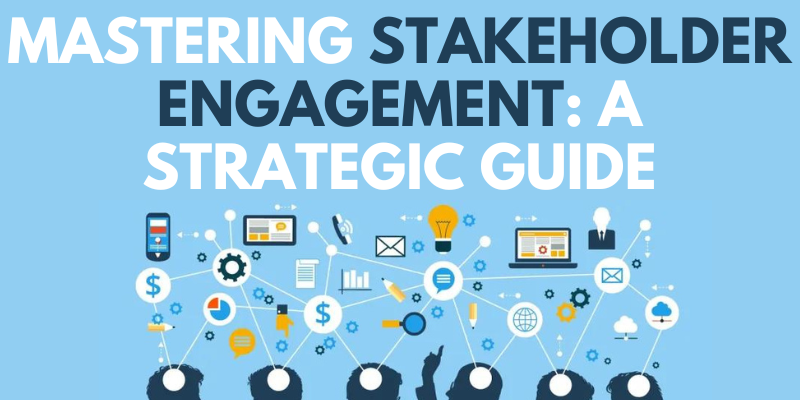Effective stakeholder communication is a crucial skill for business analysts. In a world of frequently changing needs and various stakeholders, the ability to effectively and persuasively convey complex concepts may make or break a project’s success. In this blog, we will delve into “The Art of Effective Stakeholder Communication,” exploring strategies and techniques that can help business analysts excel in this critical aspect of their role.
Why Stakeholder Communication Matters
Stakeholders are the lifeblood of any project, especially in the realm of MBA Business Analytics. They include individuals or groups who have a vested interest in the project’s outcome, such as clients, team members, executives, and end-users. The capacity of a business analyst to grasp, manage, and communicate with diverse stakeholders is usually used to assess project success. Effective communication keeps everyone on the exact same website, avoids misunderstandings, and develops trust and teamwork.
Understanding Your Audience
One of the fundamental principles of effective stakeholder communication is understanding your audience. Not all stakeholders have the same level of expertise or interest in the project’s details. Tailor your communication style and content to your audience’s needs and preferences. For example:
Executive Stakeholders: Focus on high-level summaries and the impact on the organization’s strategic goals.
Technical Stakeholders: Dive into technical details and provide in-depth analysis.
End-Users: Use user-friendly language and emphasize how the project benefits them.
Project Team: Communicate progress, challenges, and action items clearly and concisely.
Choosing the Right Communication Channels
Selecting the appropriate communication channels is vital. Email, meetings, reports, and presentations are all valuable tools, but the key is to use them effectively:
Email: Use for quick updates, sharing documents, or scheduling meetings.
Meetings: Hold regular meetings to discuss progress, address concerns, and ensure alignment among stakeholders.
Reports: Create detailed reports for stakeholders who prefer in-depth information.
Presentations: Use presentations to highlight key points and engage your audience visually.
Collaboration Tools: To improve communication and document sharing, use project management and collaboration technologies.
Active Listening and Feedback
Effective communication, especially in the context of MBA Business Analytics In Chennai, is a two-way street. Business analysts should not only convey information but also actively listen to stakeholder feedback. Encourage questions, concerns, and suggestions, and use feedback to refine your approach and solutions. This fosters a sense of collaboration and demonstrates your commitment to meeting stakeholders’ needs.
Transparency and Honesty
Transparency and honesty are essential principles in stakeholder communication. If challenges arise or if the project faces delays or issues, it’s crucial to communicate these openly and proactively. Stakeholders value transparency, and it helps build trust even in difficult situations.
Managing Conflicts and Differences
Conflicts among stakeholders are not uncommon, even in the dynamic landscape of Business Schools In Chennai. As a business analyst, part of your role is to navigate these conflicts diplomatically. Identify the root causes, involve the relevant parties, and work towards mutually agreeable solutions. Effective conflict resolution can prevent issues from derailing the project.
Conclusion
In the world of business analysis, mastering the art of effective stakeholder communication is a game-changer. It ensures that projects stay on track, stakeholders remain engaged, and everyone works toward common goals. By understanding your audience, choosing the right communication channels, actively listening, being transparent, and skillfully managing conflicts, you can elevate your stakeholder communication to a level that significantly contributes to project success. Remember that successful communication is more than just presenting information; it is also about promoting cooperation and creating trust among all stakeholders, which leads to better outcomes for your projects and organisation.
